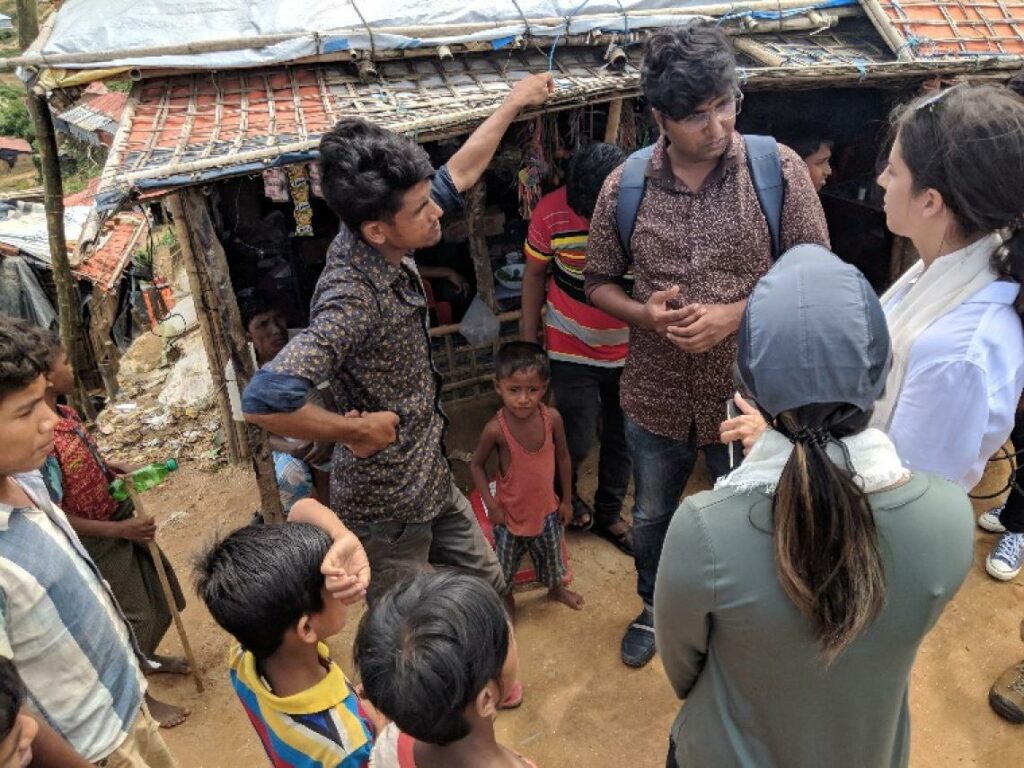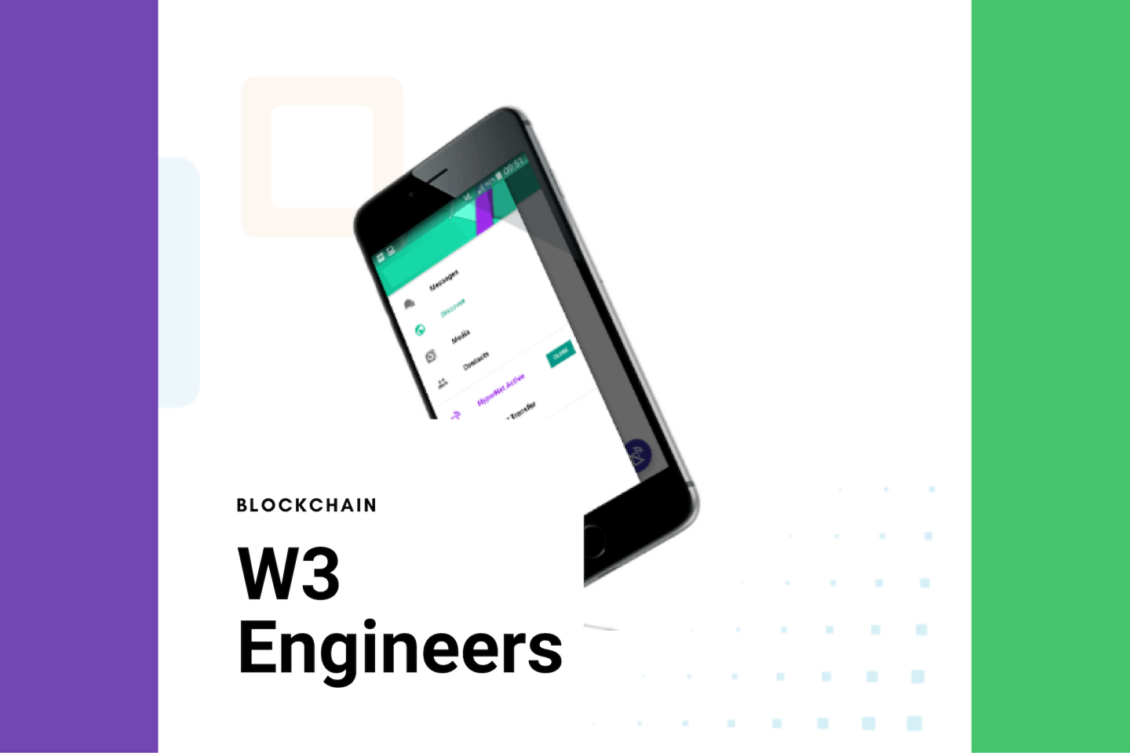“A mesh enabled blockchain based messaging application, allowing users within the network to connect via smartphones.”
— Rakibul Islam, CEO of W3 Engineers Ltd.
We are creating a refugee camp messaging application, using a mobile mesh networking technology. Refugees will be able to send direct messages to each other, and the app will provide capabilities for emergency broadcasting and critical message delivery between NGOs, aid workers, and the refugees. This app aims to help make communicating with loved ones affordable and accessible to everyone.
We started working on mesh technologies, when we saw how constrained universities were by affordability and network congestion. We thought if we could help students connect without Internet, they would be better able to learn.
More than half of the world’s population does not have access to the most basic forms of connectivity, making every day things like communicating with family members impossible. Existing attempts at solving this problem still rely on infrastructure and someone paying for data access.
According to the UNHCR, there are 68.5 million forcibly displaced people worldwide, 25.4 million of whom are refugees. In remote villages or in refugee camps, internet access can mean connection with loved ones around the world, access to online healthcare and education, and the power to harness new entrepreneurial opportunities.
Refugees deem connectivity to be critical in their daily lives, and they are willing to make large sacrifices to get and stay connected, sometimes prioritizing it over essentials like food, healthcare, education, and clothing.
Now, we are hoping to utilize our model to help refugees connect with their families.
With a Mesh enabled blockchain based messaging application, refugees will no longer have to make the choice between connecting with loved ones and feeding their families.

W3 Engineers Team on a field mission
FRONTIER TECHNOLOGY & OPEN SOURCE
Traditional connectivity requires signals to be sent up to the network and back down to the receiving device. With mesh technology, devices will talk to each other via WiFi, WiFi direct or Bluetooth, no internet access needed. If everyone in a community has our application, they could message one another. New applications could also leverage already created density to incubate entirely new solutions using this new way of connecting.
Our goal with this application is to build a solution to help connect the most vulnerable populations with each other and valuable humanitarian services. By open-sourcing our finished application, we’re creating an ecosystem of developers building applications that can strengthen this solution, and also allow other organizations to adopt and adapt the application for their own needs. We hope that this will allow the benefits of connectivity to become more accessible to vulnerable populations.
TEAM & DIVERSITY
With more than 100 people working in Bangladesh, diversity is our strength. We do not discriminate by race or religion, wealth or poverty, gender or age. Most of our team is located in Khulna rather than Dhaka, Bangladesh’s capital. While somewhat unusual for a technology company to be the smaller city of Khulna, we felt growing our team here allowed people to be closer to their families and attract people who may otherwise be unable to work in technology.
Our team diversity helps us see problems from multiple angles. It is in our DNA to ensure everyone gets the respect they deserve. Furthermore, through close collaboration with international partners and companies, we can learn from others while sharing the strengths of Bangladeshis.
WAY AHEAD:
Thanks to the investment from UNICEF’s Innovation Fund, we will develop an open-source mesh messaging application for those living in refugee camps in Bangladesh. This investment brings us into a community of like-minded builders looking at some of the world’s most pressing challenges and how they can be solved with cutting edge technology.
We’re most interested in ways that mobile applications and the blockchain can provide affordable connectivity and accessibility to those who are unconnected. We are particularly interested in working with the other projects within the UNICEF’s Venture Fund portfolio and join larger platform of aligned solutions.
About UNICEF Innovation Fund: The Fund has been specifically designed to finance early stage, open-source technology that has the potential to impact children on a global scale. The core motivation of the IF is to fund “clusters” or portfolios of initiatives around emerging technology, like UAVs, Blockchain, Data Science and AI or virtual reality – so that UNICEF can both shape markets and also learn about and guide these technologies to benefit children.
As well as funding the start-up companies, UNICEF’s Innovation Fund will provide product and technology assistance, support with business growth, access to a network of experts and partners. The Fund also actively seeks second-round investment and support for companies it has invested in, as well as the opportunity to scale-up these technologies, when they are successful, in the more than 190 countries and territories where UNICEF operates.
More info: www.unicefinnovationfund.org
Join our conversations online. Follow us at @unicefinnovate
